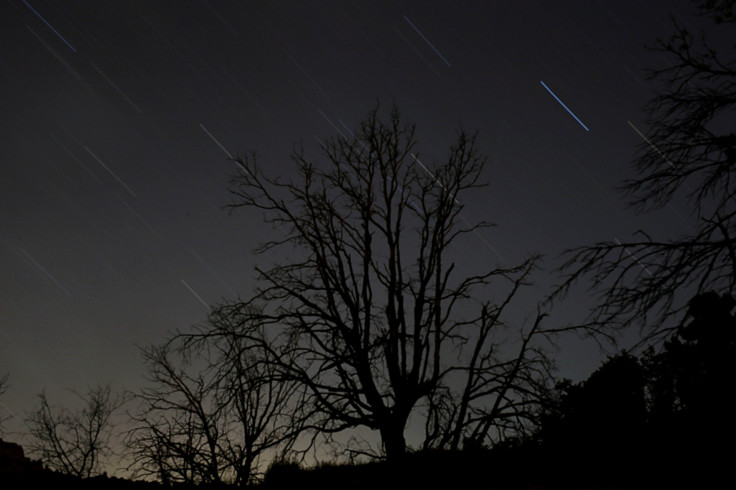Taurid Meteor Shower 2016 Live Stream: How To Watch Fireballs From Comet Encke

If the state of American politics is stressing you out, simply walk outside and look up — there might be fireballs to distract you. The Taurid meteor shower's two streams are scheduled to peak this Friday and Saturday as well as Nov. 11 and Nov. 12, Space.com reported.
The Taurid meteor shower is named after the constellation Taurus, which is the spot the meteors seem to originate from. It occurs annually when the Earth moves through debris from Comet Encke, with the streams being visible every fall. And even though it's been nearly a century since its discovery was announced, it's still as amazing to watch as ever.
Check out a live stream of the sky here or below:
The Taurid meteor shower is known for its fireballs, or brighter- and larger-than-usual meteors that sometimes make it through the atmosphere and hit the surface of the Earth, according to geology.com. However, the shower's streams won't provide a ton of fireballs this year. The forecast is about seven meteors every hour, according to EarthSky.org.
"This is not one of these high-rate meteor showers, but when you see one, you will know it," Bill Cooke, of NASA's Meteoroid Environment Office, told the Palm Beach Post. "They are very bright, and they are pretty consistent year after year."
As with all stargazing, AccuWeather recommends you bring a blanket, binoculars and a printed sky map. If you're trying to spot a Taurid fireball, specifically, do that and head out after midnight on Friday or Saturday.
"The best time to look for Taurids is after midnight, when Taurus is high in the sky and when the sky is dark and clear, with no moonlight to mask the fainter meteors," Cooke wrote in a blog post for NASA last year.
If you don't have any luck, don't fret. You have another chance this month to see shooting stars. The Leonid meteor shower is set to peak Nov. 16 and Nov. 17, according to National Geographic.
© Copyright IBTimes 2024. All rights reserved.






















